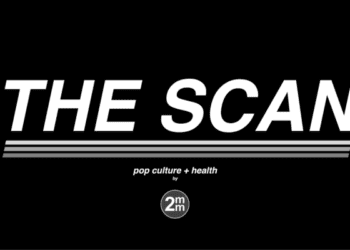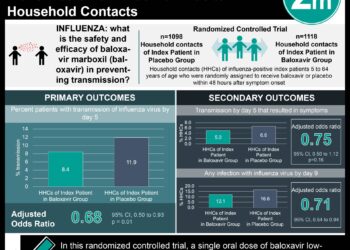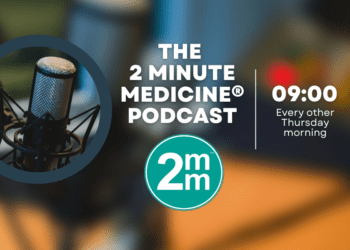Emerging coronavirus found to spread in healthcare facilities
Image: PD Middle East Respiratory Syndrome Coronavirus (MERS-CoV)
1. Transmission of Middle East Respiratory Syndrome associated with healthcare facilities occurs via person-to-person contact.
2. Analysis of a single outbreak in Saudi Arabia identifies an incubation period of 5.2 days and a serial interval of 7.6 days.
Evidence Rating Level: 2 (Good)
Study Rundown: The novel coronavirus, Middle East Respiratory Syndrome (MERS-CoV), is a “SARS-like” emerging infectious disease first spotted in eastern Saudi Arabia resulting in severe pneumonia and high mortality rates (65% fatality rate in this outbreak). Cases of this virus have been spotted across the Middle East and as far as the United Kingdom. This epidemiological analysis draws on exposure and hospital evidence from a single outbreak involving 23 cases between April 1 and May 23, 2013 to suggest a transmission method, incubation period and serial interval.
Researchers found that an outpatient dialysis unit connected 9 out of the 23 infected individuals, further putative transmission pathways were connected to an ICU, and other hospital wards in different hospitals. One healthcare worker at the ICU developed MERS-CoV after being in contact with the infected patient during cardiac resuscitation and 5 out of 217 potential household contacts developed the virus. Based on this evidence, researchers estimated the incubation period to be 5.2 days (95%, 1.9 – 14.7) with a serial interval of 7.6 days (95%, 2.5 – 23.1). Researchers also suggest that the virus is transmitted from person-to-person, but are unable to determine whether transmission occurs through respiratory droplets or direct contact.
Click to read the study in the New England Journal of Medicine
In Depth: Closer analysis of specific patients found that out of the 23 patients, 87% presented with a fever, 89% presented with a cough, and 35% presented with vomiting. Looking at the chest radiographs, 43% of patients presented with unilateral infiltrate and 22% with bilateral infiltrate. Qualitative data recorded by researchers from the hospital wards identified infected patients in adjacent beds, sharing rooms, and using similar medical devices within the healthcare facilities where transmission was likely to have occurred. This analysis provides invaluable and expeditious information on the outbreak and recommendations regarding hospital risk. Precautionary measures around patients presenting with pneumonia symptoms should be addressed by healthcare facilities in infected areas.
By Jordan Anderson and Andrew Bishara
More from this author: CT scans linked to cancer risk in children; Slowdown in healthcare costs linked to economic and clinical factors; Breast implants linked with later stage breast cancer, mortality; Contraband tobacco leads to reduced smoking cessation; Circulating tumor DNA used to monitor metastatic breast cancer; Salt intake linked with autoimmune disease; Continuity in diabetes provider improves outcomes and decreases costs;
© 2013 2minutemedicine.com. All rights reserved. No works may be reproduced without written consent from 2minutemedicine.com. Disclaimer: We present factual information directly from peer reviewed medical journals. No post should be construed as medical advice and is not intended as such by the authors or by 2minutemedicine.com. PLEASE SEE A HEALTHCARE PROVIDER IN YOUR AREA IF YOU SEEK MEDICAL ADVICE OF ANY SORT. Content is produced in accordance with fair use copyrights solely and strictly for the purpose of teaching, news and criticism. No benefit, monetary or otherwise, is realized by any participants or the owner of this domain.








